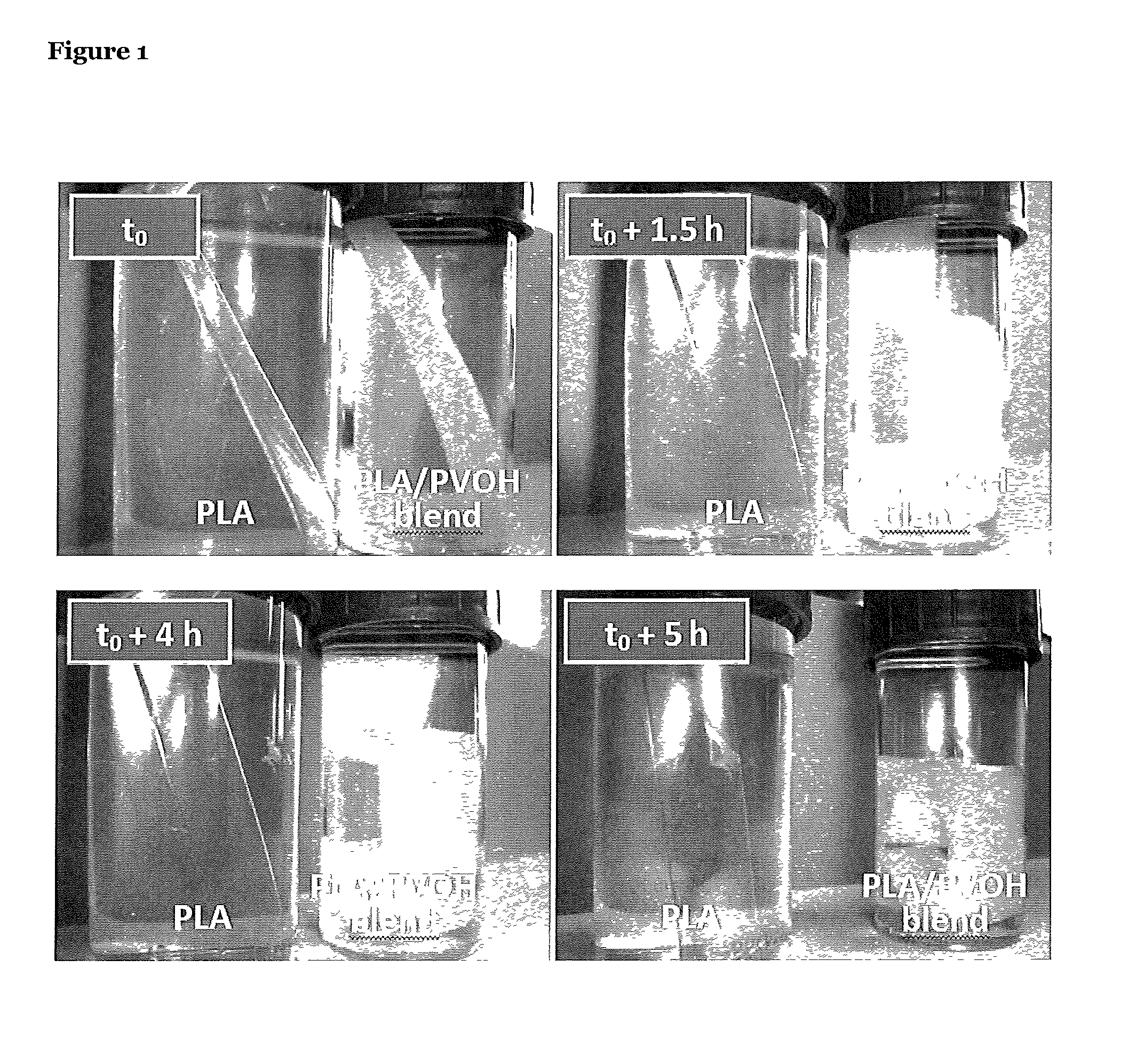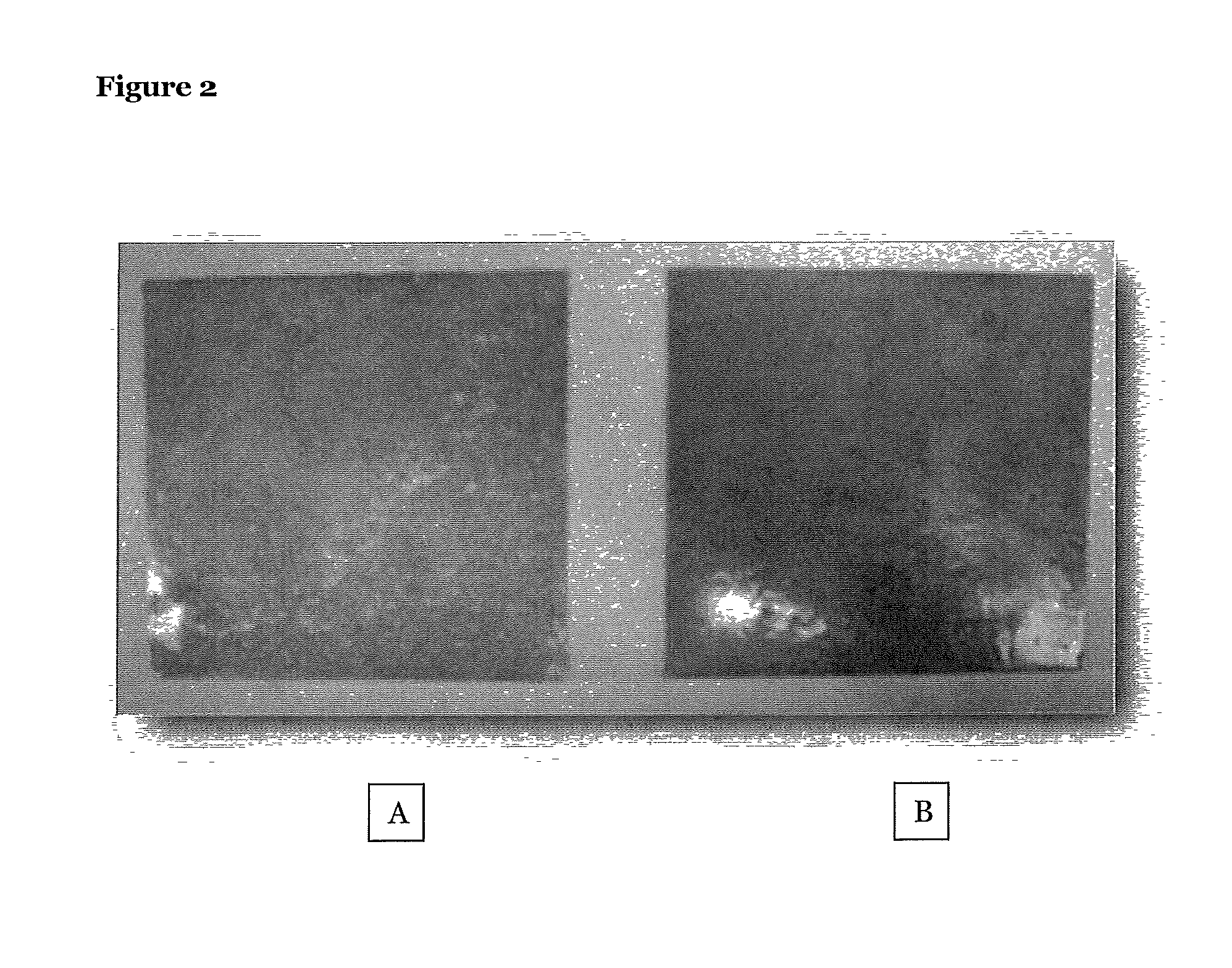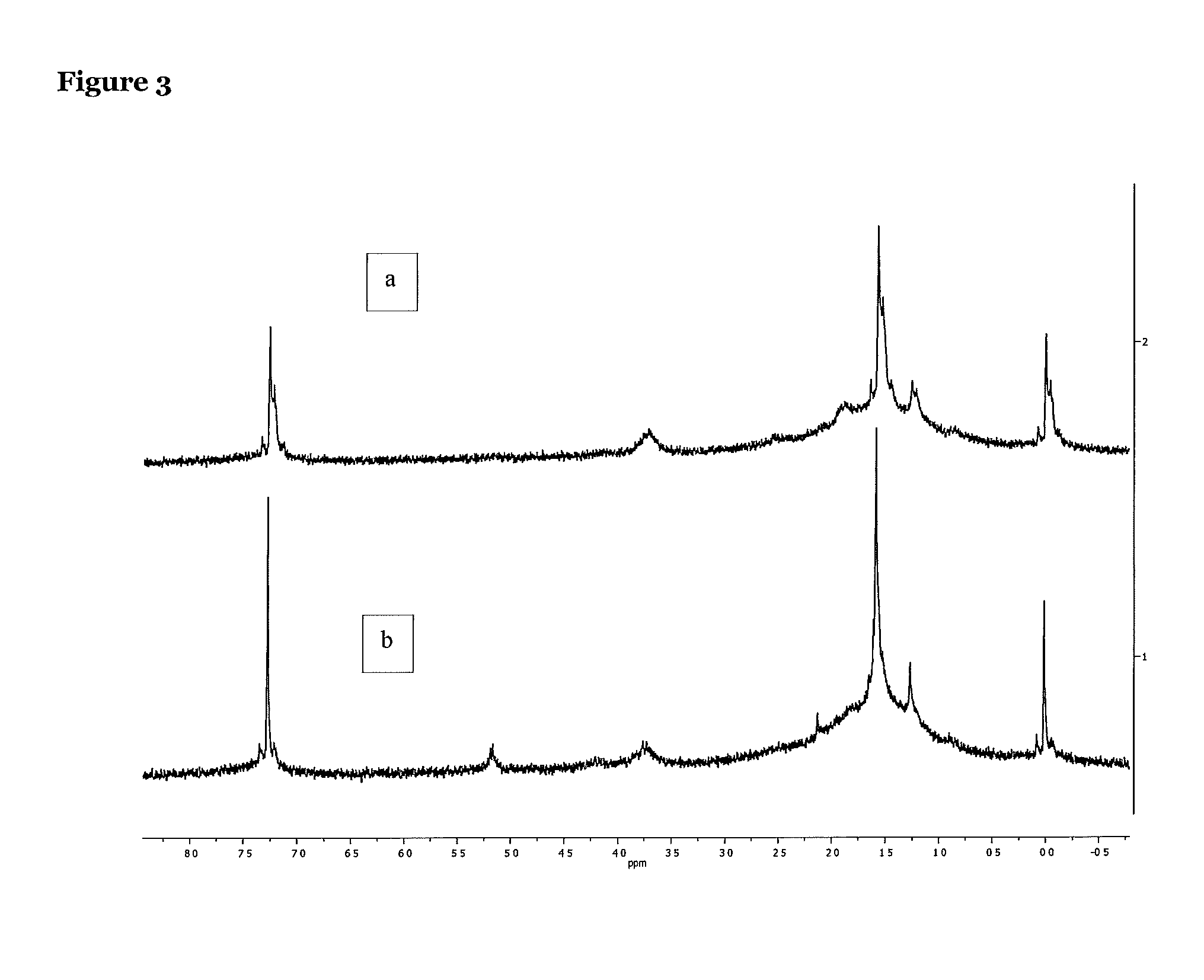Blends of a Polylactic Acid and a Water Soluble Polymer
- Summary
- Abstract
- Description
- Claims
- Application Information
AI Technical Summary
Benefits of technology
Problems solved by technology
Method used
Image
Examples
example 1
[0045]Maleic anhydride-grafted PLA was produced using a Leistritz ZSE 18 HP. Prior to introduction into the extruder, dried PLLA pellets were premixed with 3 wt % of maleic anhydride and 0.5 wt % of Lupersol® 101. Maleation was then conducted at 190° C. using a low screw speed (50 rpm) in order to increase the residence time.
[0046]The MA-g-PLLA thus obtained was purified and the MA amount assessed by titration. The MA content was estimated at 0.45 wt %.
example 2
[0047]Various PLLA / HEC 50 / 50 w / w compositions were obtained by melt-compounding polymer pellets and additives (plasticizers, compatibilizers) at 190° C. using a Brabender bench-scale kneader (model 50 EHT, 80 cm3 free volume) equipped with cam blades for 3 minutes at 30 rpm, followed by 6 minutes at 60 rpm. HEC was obtained from Merck. Glyplast® was obtained from Condensa Quimica, Spain. Polyethylene (Mw=200) was obtained from Fluka. Before processing, polymers and additives were dried overnight at 80° C. in a ventilated oven.
[0048]Films with a thickness of 500 μm were then prepared by compression moulding at 190° C. using an Agila PE20 hydraulic press (low pressure for 120 seconds without degassing cycle, followed by a high-pressure cycle at 150 bar for 180 seconds and cooling by tap water at 50 bar for 180 seconds). The mechanical properties of the PLLA / HEC 50 / 50 (w / w) blends (plasticized with 20 wt % Glyplast®) were assessed by tensile testing. MA-grafted PLLA were used as compat...
example 3
[0049]The plasticization of hydroxyethyl cellulose (HEC) was considered. For that purpose, a preparative method commonly used for starch plasticization was successfully adapted. Mixtures of HEC and plasticizers were prepared at room temperature and water was added for some compositions. These premixes were left to swell overnight. Next, compositions were melt-processed via Brabender at 110° C. for 6 minutes. Various compositions were prepared in order to investigate the effect of both water and plasticizer content. The samples prepared are listed below:[0050]HEC / Glycerol 60 / 40[0051]HEC / Glycerol 70 / 30[0052]HEC / Glycerol / water 60 / 30 / 10[0053]HEC / Glycerol / water 60 / 25 / 15[0054]HEC / PEG 200 / water 60 / 30 / 10[0055]HEC / PEG 400 / water 60 / 30 / 10[0056]HEC / Glycerol / water 60 / 30 / 10
[0057]For each composition, a gel-like structure was obtained which seemed indicate effective HEC plasticization.
PUM
| Property | Measurement | Unit |
|---|---|---|
| Percent by mass | aaaaa | aaaaa |
| Melt viscosity | aaaaa | aaaaa |
| Solubility (mass) | aaaaa | aaaaa |
Abstract
Description
Claims
Application Information
 Login to View More
Login to View More - R&D
- Intellectual Property
- Life Sciences
- Materials
- Tech Scout
- Unparalleled Data Quality
- Higher Quality Content
- 60% Fewer Hallucinations
Browse by: Latest US Patents, China's latest patents, Technical Efficacy Thesaurus, Application Domain, Technology Topic, Popular Technical Reports.
© 2025 PatSnap. All rights reserved.Legal|Privacy policy|Modern Slavery Act Transparency Statement|Sitemap|About US| Contact US: help@patsnap.com



